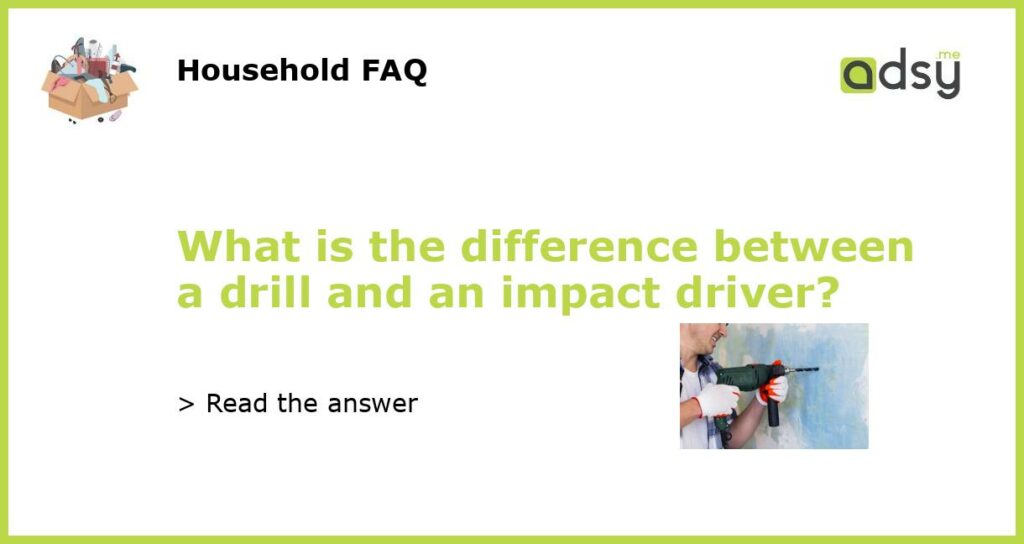Understanding the Purpose of a Drill and an Impact Driver
A drill and an impact driver are two popular tools used for drilling holes and driving screws. While they may seem similar in function, they have significant differences that make them suited for different tasks. Understanding the purpose of each tool is essential for making an informed decision when choosing between a drill and an impact driver.
The Functionality of a Drill
A drill is a versatile power tool designed for drilling holes and driving screws. It operates by rotating a drill bit, which cuts into the material and creates a hole. Drills come in different sizes and can handle various drilling tasks, from small holes in thin materials to larger holes in thicker materials.
Drills typically have adjustable speed settings to provide control over the drilling process. They can be used with different types of drill bits, including twist bits, spade bits, hole saws, and more. With the right bit, drills can also be used for tasks like sanding, buffing, or mixing paint.
When using a drill, the force is applied directly to the drill bit, which can cause the tool to slip or become difficult to control when driving screws. This is where an impact driver comes in.
The Power of an Impact Driver
An impact driver is a specialized tool designed for driving screws and other fasteners. It uses a combination of rotation and concussive blows to provide high torque and easier driving. These concussive blows are created by an internal mechanism that delivers quick bursts of rotational force.
The impact driver’s high torque makes it suitable for driving long screws, lag bolts, or fasteners into tough materials like hardwood or concrete. It can handle heavy-duty tasks where a regular drill may struggle or stall.
Unlike a drill, an impact driver does not have adjustable speed settings. Instead, it delivers a constant and powerful rotational force, making it more efficient in driving screws. However, the high torque of an impact driver can cause the tool to strip or break smaller screws or delicate materials.
Choosing Between a Drill and an Impact Driver
When deciding between a drill and an impact driver, consider the specific tasks you will be performing. If you primarily need a tool for drilling holes or working with softer materials, a drill would be a versatile option. It allows you to adjust the speed and use various drill bits for different applications.
On the other hand, if you frequently work with heavy-duty tasks that involve driving screws or fasteners into tough materials, an impact driver would be the ideal choice. Its high torque and concussive blows make it easier to drive screws quickly and efficiently.
However, if you can only choose one tool and need it for both drilling and driving, many manufacturers offer combination kits that include both a drill and an impact driver. These kits provide the versatility of a drill and the power of an impact driver in one package.
Conclusion
In summary, the main difference between a drill and an impact driver lies in their functionality and purpose. While both tools are used for drilling holes and driving screws, an impact driver provides higher torque and is more suitable for heavy-duty tasks, while a drill offers versatility and control. Understanding the specific tasks you need to perform will help you make the right choice between a drill and an impact driver or opt for a combination kit that provides the best of both worlds.






